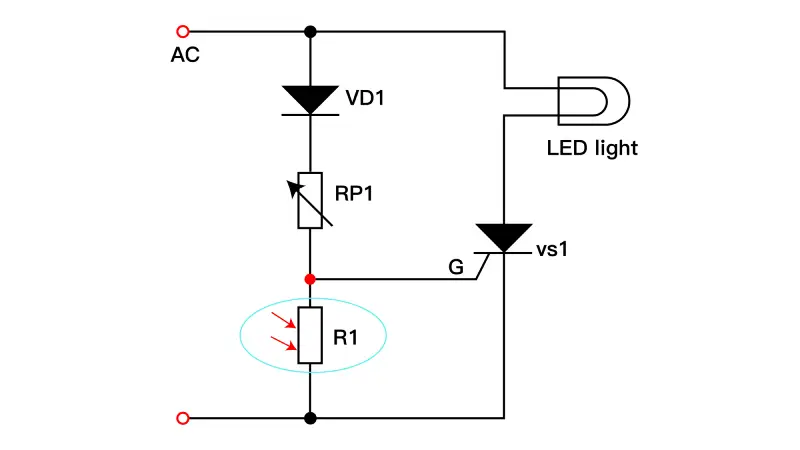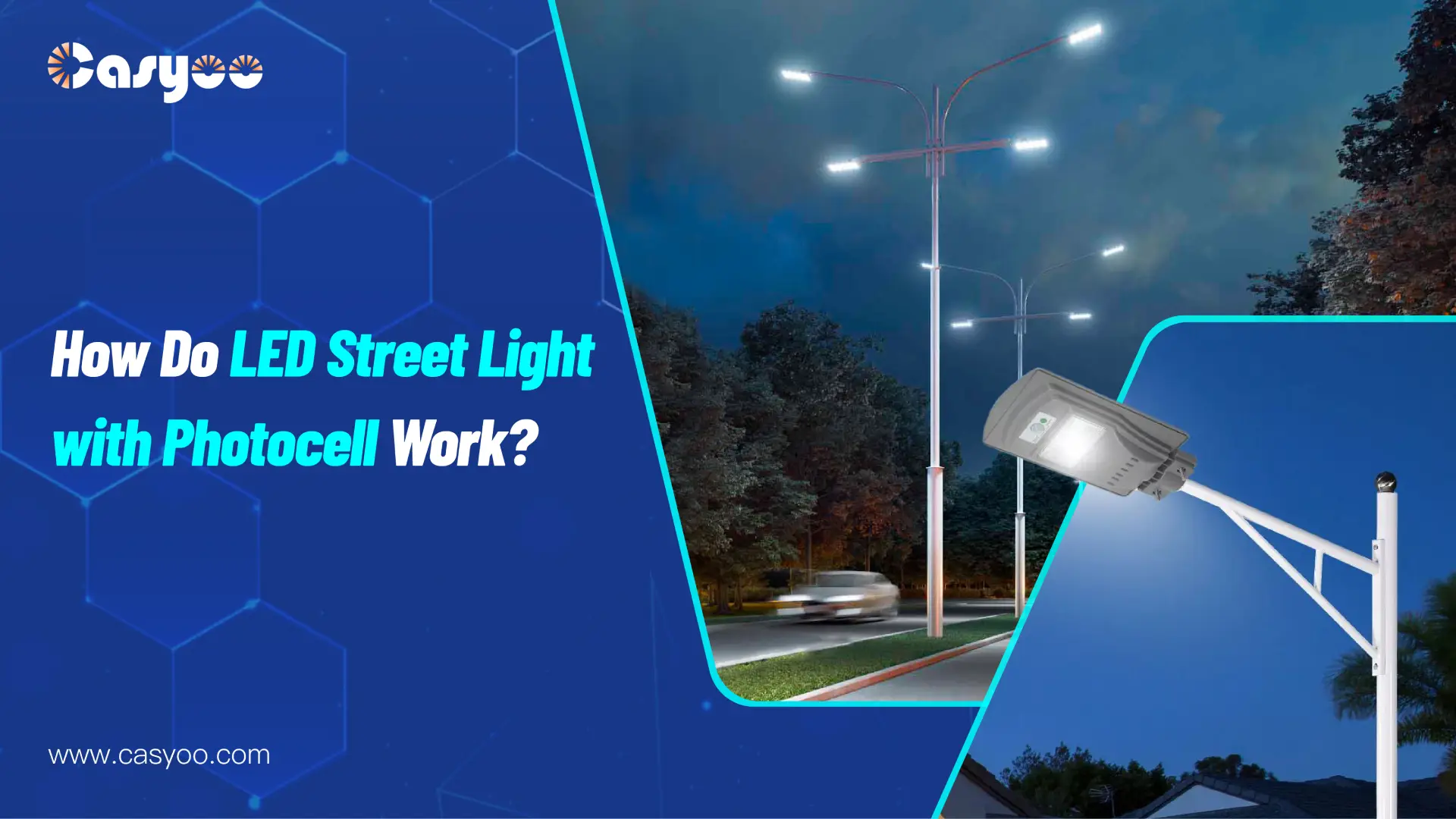If you observe the street lights carefully, you will find that there is something on top of some of them. They are actually the photocells of street lights, which sense the light intensity of the ambient environment and send signals to the controllers. It is a popular way of automatic dimming LED street lights. Read this passage and know the mechanism of the LED street light with photocell right now!
How do LED street lights with photocell work?
The photocell absorbs photons when it is exposed to light, which moves the electrons from the valence band to the conduction band. As a result, the photocell’s resistance decreases and its conductivity increases. As the surroundings darken, the photocell’s free electrons and holes recombine and return to their original value. The photocell’s resistance fluctuates according to the intensity of the incident light.
How do you connect a photocell to an LED street light?
The photoresistor has no obvious positive and negative electrodes, but it has a “photosensitive surface” and a “lead surface.” Among them, the “photosensitive surface” is usually the side with a smoother surface, and the “lead surface” is the other side. Therefore, in practical applications, we can regard the metal piece outside the photoresistor as the “lead surface” of the photoresistor and then measure the resistance value from the other port. If the reading increases, the touched side is the “lead surface.” On the contrary, it is the “photosensitive surface.”.
You need to use the proper wiring technique while employing the photocell. Usually, we can connect the photoresistor to other components through wires and make sure the lead lengths are the same. Otherwise, the circuit may not work properly due to insufficient wire material.
Application of LED street light with photocell
The image below depicts a common street light automatic control switch circuit. VS1 in the circuit is a unidirectional thyristor, while R1 is a photocell.

When the light is bright, the photocell R1’s resistance is low. VD1 rectifies the public AC voltage and outputs a unidirectional pulsed DC voltage. After dividing by RP1 and R1, the voltage is very low, as is the voltage delivered to the control electrode of the thyristor, VS1. At this point, the thyristor VS1 cannot conduct; hence, there is no current in the HL lamp circuit, and the lamp does not illuminate.
When it grows dark, the resistance of the photocell R1 rises. This increases the voltage delivered to the thyristor’s control electrode, VS1. As a result, the thyristor VS1 allows current to pass through the HL light circuit, which turns on the lamp.
To alter the sensitivity of the light control circuit, modify the resistance of resistor RP1. This changes the voltage delivered to the thyristor VS1, which affects the amount of current flowing through the light. Increasing RP1 requires a higher resistance value (darker light) to activate the thyristor VS1. Reducing the resistance value of RP1, on the other hand, can turn on the lamp even when the light is not extremely dim.
Differences between other light sensors and a photocell
As a type of light sensor, photocells are typically compared with photodiodes. Light can be converted into electrical impulses using a photodiode. Their small reaction range and great sensitivity allow them to detect signals such as infrared light and ambient light brightness. Light-controlled switch circuits and photosensitive amplifier circuits commonly employ photodiodes.
A photocell is a device that reacts to changes in light intensity by changing its resistance. It has a wider range of sensitivity than a photodiode, but it is less sensitive overall. You need to apply a constant voltage to a photocell and then measure the changes in its resistance to determine the ambient light brightness.
Differences between a PIR and a photocell
Photocells and passive infrared sensors (PIRs) are both devices that can sense light, but they are sensitive to different types of light. Photocells are sensitive to the light that we can see, while PIR sensors are sensitive to infrared radiation, which is a type of light that we cannot see. PIR sensors are more complex than photocells, consisting of three main components: an infrared sensing detection unit, an interference filter, and a field effect tube matching device. The PIR sensor’s infrared sensing detection unit is sensitive to light with wavelengths between 0.2 and 20 micrometers. The wavelength of the light emitted by humans is between 9 and 10 micrometers, so the PIR is suitable for detecting the motions of people.
Alarms and motion detectors can be made with PIR sensors. They concentrate the infrared light that the human body emits using a Fresnel lens. To make sure the PIR sensors can work to meet the requirements, there is also an output circuit, a comparator, and an amplifier. Automatic doors frequently use PIR sensors to sense passersby.
Conclusions
Photocells are a common type of light sensor used in street lighting systems. They can sense the intensity of light and change their resistance accordingly. In a new era, this can be seen as an easy way to replace timer control and achieve smart lighting. If you are looking for high-quality street lights with photocells, you can contact us right now!




